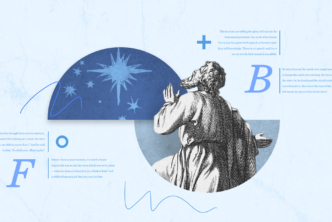Writing a paper on a historically significant event is an excellent way to learn. It trains you to gather information, interpret it, and persuasively present an informed opinion. The researching process itself teaches you a great deal, but it also equips you to contribute to ongoing discussions on a given topic.
Here are the basic steps of writing a paper on a significant event, either for a class or for your own personal research:
1. Select an Event
Unless you’ve been assigned a historically significant event to research, you’re most likely going to begin the process from a position of interest. The event you want to explore will be interesting to you for one reason or another (or maybe for many reasons). But it’s important to discover the particular lens through which you want to view it. Do you want to see the historical context that led up to it? Do you want to look back at the event through the filter of contemporary debates? Do you want to focus on the way the event influenced later events?
Having a lens in mind will help you to be aware of the perspective you bring to your studies by default, because the reality is that no one approaches their study or research in a vacuum. We all have particular ways of viewing the world, and attending to those—and being intentional about them—can help us to be intellectually honest and gracious.
Remember, you don’t have to be an expert before you begin—that’s what the research process will accomplish.
For more on the process of researching and writing a paper, check out these resources:
- Article: Work with Librarians to Help Students Write Better Papers
- The Craft of Research — particularly chapter 5 (Wayne C. Booth, Gregory G. Colomb, Joseph M. Williams, Joseph Bizup, and William T. Fitzgerald)
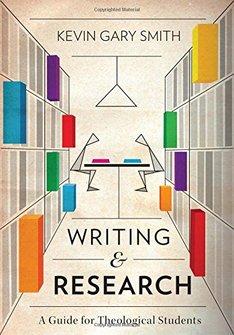
Writing & Research: A Guide for Theological Students by Kevin Gary Smith
Written in a simple yet engaging style, Dr. Kevin Smith applies his years of experience and expertise in scholarly writing and research in this one-volume guide. Perfect as an introduction for new and continuing undergraduate or postgraduate students, this publication provides helpful guidelines and illustrations on all the elements that go into producing an academic work. Combining specific instruction on researching and preparing an academic work, as well as practical advice for task management, makes this an ideal go-to guide for students and supervisors alike.
Timeline
The Timeline Tool displays a unified graphical timeline of historical events.
2. Do Your Research
With an event selected, it’s time to find the resources you’re going to use and dig into them. You may find that one resource offers the best discussion of your chosen event, but you can’t stop there! Researching well means considering opinions that differ from each other (and probably from your own). It’s in the conversation that emerges from engaging with multiple perspectives that real insight and understanding emerge
Conduct a literature review and build your bibliography
The process of conducting a literature review and building a bibliography is an iterative process. It’s not a one-time step but a step you’ll return to over and over again as you move through your research.
Essentially, in this step, you’re discovering what resources exist and cataloging them. As you begin to read the resources you discover, you’ll likely find references to other works that you’ll then want to read.
Chapter 5 of The Craft of Research is particularly helpful here.
Consult standard sources
If the event you want to research is part of church history, then encyclopedias, theological dictionaries, concordances, and other theological reference tools contain useful information that will orient you to the event you’ve selected and its context. But the biggest help these resources will offer you at this stage is their bibliographies. Be sure to check the cross-references.
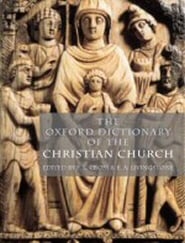
The Oxford Dictionary of the Christian Church, rev. ed.
The Oxford Dictionary of the Christian Church, since its first appearance in 1957, has established itself as the indispensable one-volume reference work on all aspects of the Christian Church. This Revised Edition, published in 2005, builds on the unrivaled reputation of the previous editions. Revised and updated, it reflects changes in academic opinion and Church organization.
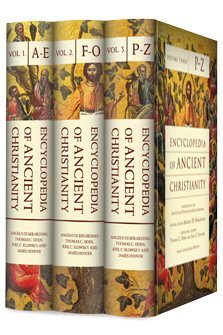
Encyclopedia of Ancient Christianity (3 vols.)
The Encyclopedia of Ancient Christianity covers eight centuries of the Christian church and comprises 3,220 entries by a team of 266 scholars from 26 countries representing a variety of Christian traditions. It draws upon such fields as archaeology, art and architecture, biography, cultural studies, ecclesiology, geography, history, philosophy, and theology.
Consult peer-reviewed journals
You need to see what your contemporaries have to say about the event you’re examining in order to situate your research in its context. This means consulting peer-reviewed journals. As you read, you’ll discover where scholars agree and disagree, and how the study of that event has advanced over time.
Academic Journal Bundle 7.4 (575+ vols.)
Study pivotal issues in history, critical biblical interpretation, and archaeology with distinguished scholars from around the world with the Academic Journal Bundle 7.4. Including journals that zoom in on a specific field, as well as eclectic journals that provide commentary and insight on a diversity of topics, this bundle adds impressive breadth to your library.
Consult primary sources
After completing all the previous steps, you will likely have become acquainted with the most important books for your chosen event, both primary and secondary. Primary sources are firsthand historical documents, whereas secondary sources are books and articles that analyze or interpret the primary sources. Reading primary sources, particularly those written by people directly involved in the event you’re researching, is especially important.
Visit logos.com to find the sources you need, and while you’re there, check out the Logos Academic packages!
3. Construct an Outline
This step is incredibly important, but it is often overlooked. It’s time to refine your angle of approach based on your research, then arrange your notes and research materials into a clear outline that will guide you as you craft a convincing and coherent argument.
See chapters 8 and 9 of The Craft of Research for more guidance on constructing your outline.
4. Draft Your Paper
You are now ready to draft your paper. Your initial focus is to expand your outline into paragraph form as straightforwardly as possible. While your outline will be essential as you draft, don’t feel you need to stick to it absolutely. You may discover as you write that a different structure or organization will better advance your argument. Make use of relevant quotations from your research to clarify your points or add support for your arguments.
5. Revise and Refine
Notice the word “draft” in the previous step. That word is intentionally selected because, arguably, the most important part of the writing process is in your revisions. Drafting gets the ball rolling, but revising is where you refine and revise your previous drafts, ensuring your argument is clear and forceful.
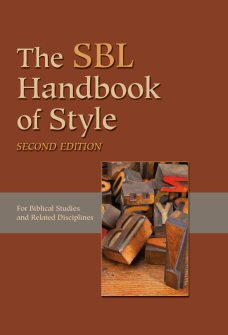
SBL Handbook of Style, Second Edition
The SBL Handbook of Style is the definitive style manual on writing and publishing in the field of biblical studies and related disciplines. The updated second edition reflects the latest practices and trends among scholars, editors, and publishers. It also includes key style changes, expanded abbreviation and spelling sample lists, a list of archaeological site names, material on qur’anic sources, detailed information on citing electronic sources, and expanded guidelines for the transliteration and transcription of 17 ancient languages.
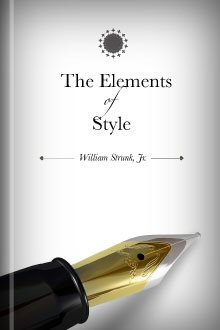
The Elements of Style by William Strunk Jr
Learn to write clear and accurate prose from a master of English style—William Strunk. This little book, originally circulated amongst Strunk’s students at Cornell, has become a desktop stalwart of engineers, managers, students, pastors, and writers of every variety. Strunk’s seven rules of usage and 11 principles of composition have been creating clear communicators for almost a century.
Conclusion
While this structure is helpful, you may find that some variation of it works better for you. Go with what works because, at the end of the day, a thoroughly-researched and well-written paper is what you’re after.





